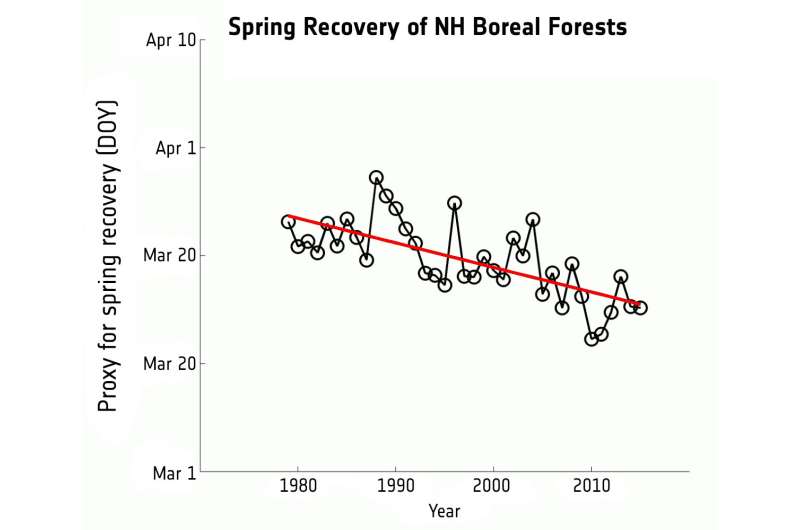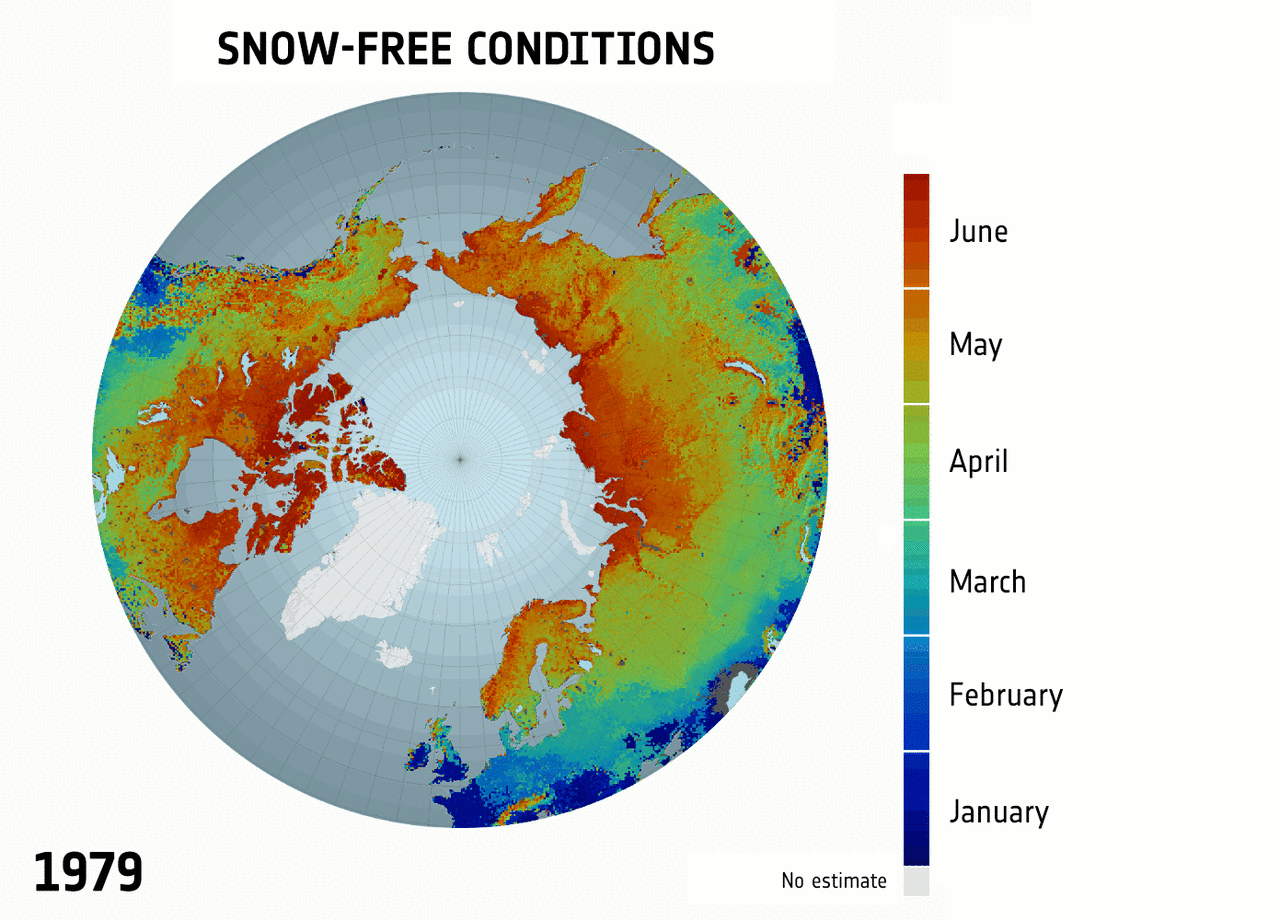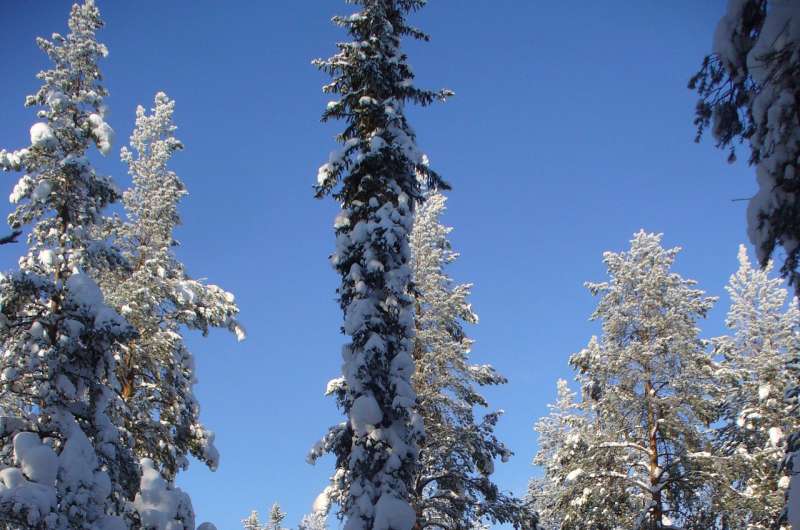This graph indicates the start of photosynthetic activity of boreal forests in the spring of each year from 1979 to 2015. Over the 36-year period, the start of photosynthetic activity – or plant growth – has shifted eight days earlier. Credit: GlobSnow / Finnish Meteorological Institute
It appears that something good can come from something bad. Although rising global temperatures are causing seasonal snow cover to melt earlier in the spring, this allows for the snow-free boreal forests to absorb more carbon dioxide from our atmosphere.
Global warming is primarily caused by carbon dioxide emissions from human activities such as burning coal, the oil and gas industry, transportation and domestic heating. As global temperatures rise, we see changes in Earth's climate such as the accelerated melting of glaciers, rising sea levels and an increase in the frequency of extreme weather conditions.
To predict the increase of carbon dioxide in the atmosphere accurately, scientists need to consider both the sources of emissions as well as the absorption of carbon dioxide both on land and in the oceans. Boreal forests are well known to be an important carbon sink on land, but the amount of carbon these high-latitude northern forests can absorb is influenced by the amount of snow cover.
To help quantify changes in carbon absorption, ESA's GlobSnow project produced daily snow cover maps over the whole northern hemisphere from 1979 to 2015 using satellites.
A team of climate and remote sensing scientists led by the Finnish Meteorological Institute recently analysed the information and found that the start of plant growth in the spring has shifted earlier by an average of eight days over the last 36 years.
The animation shows when parts of the northern hemisphere became snow-free in the spring each year from 1979 to 2015. Blue represents earlier snow melt (January–March) while red depicts later snow melt (June). Credit: GlobSnow / Finnish Meteorological Institute
By combining this information with ground-based observations of the atmosphere–ecosystem carbon dioxide exchange from forests in Finland, Sweden, Russia and Canada, the team found that this earlier start to spring growth has increased the forest uptake of carbon dioxide from the atmosphere by 3.7% per decade. This acts as a brake on the growth of atmospheric carbon dioxide, helping to mitigate the rapid increase of carbon dioxide from man-made emissions.
The scientists also found that the shift in spring recovery is much larger in Eurasian forests, leading to double the increase in carbon uptake compared to North American forests.
"Satellite data played an essential role in providing information on variability in the carbon cycle," said Prof. Jouni Pulliainen, who led the research team at the Finnish Meteorological Institute.
"By combining satellite- and ground-based information, we were able to turn observations of melting snow into higher-order information on springtime photosynthetic activity and carbon uptake."
Snow-covered boreal forest. Credit: A. Siliis
These new results will now be used to improve climate models and help to increase the accuracy in predictions of global warming.
Next year, ESA plans to improve the satellite-based record of global snow cover with the upcoming Snow_cci project of ESA's Climate Change Initiative.
Provided by European Space Agency
























